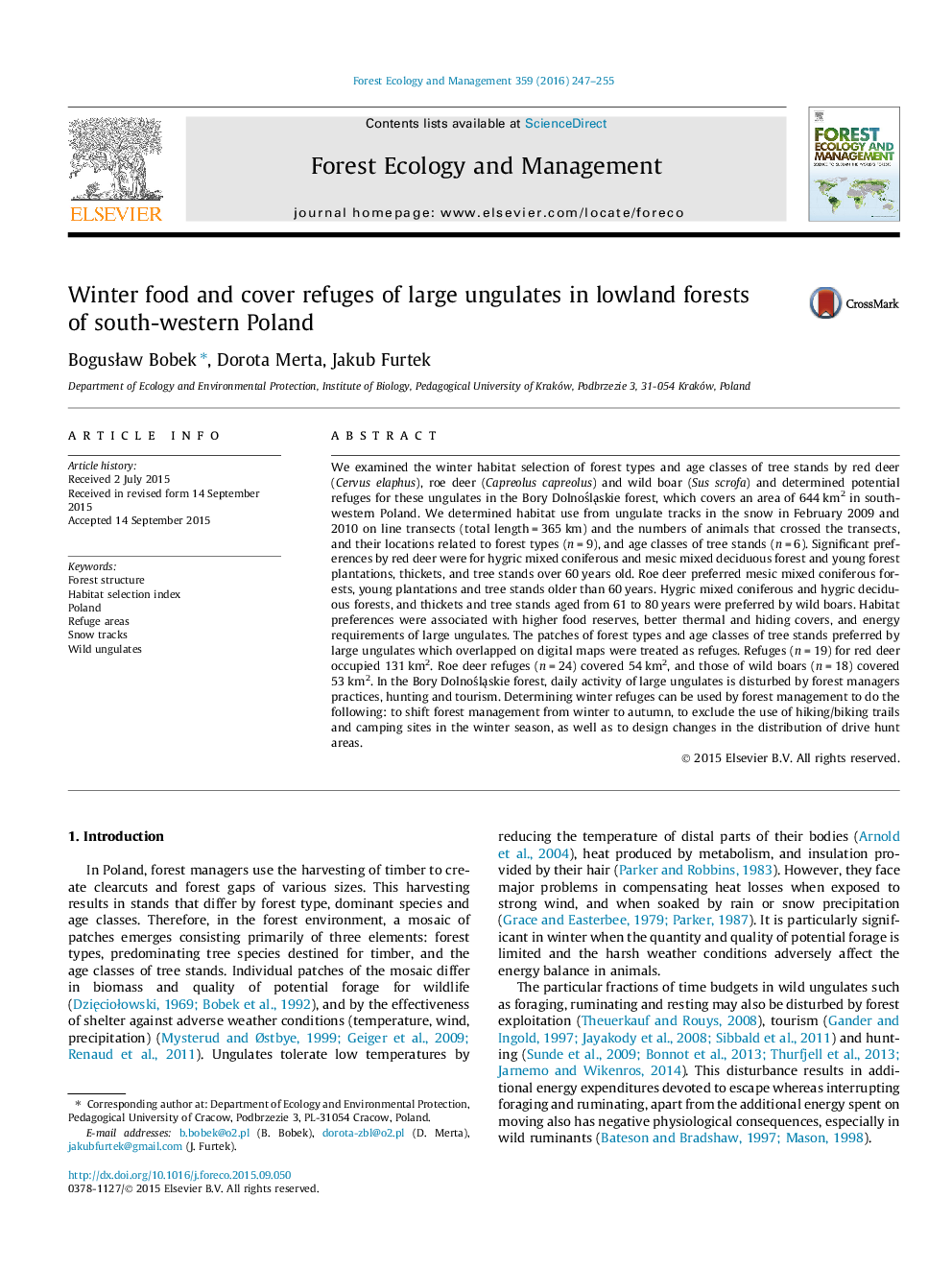| کد مقاله | کد نشریه | سال انتشار | مقاله انگلیسی | نسخه تمام متن |
|---|---|---|---|---|
| 6542669 | 159164 | 2016 | 9 صفحه PDF | دانلود رایگان |
عنوان انگلیسی مقاله ISI
Winter food and cover refuges of large ungulates in lowland forests of south-western Poland
ترجمه فارسی عنوان
غذای زمستانی و پوشش پناهگاه های بزرگ گوساله ها در جنگل های دشت جنوب غربی لهستان
دانلود مقاله + سفارش ترجمه
دانلود مقاله ISI انگلیسی
رایگان برای ایرانیان
کلمات کلیدی
ساختار جنگل، شاخص انتخاب محل برگزاری، لهستان، مناطق پناهندگی آهنگ های برف، زگیل های وحشی
موضوعات مرتبط
علوم زیستی و بیوفناوری
علوم کشاورزی و بیولوژیک
بوم شناسی، تکامل، رفتار و سامانه شناسی
چکیده انگلیسی
We examined the winter habitat selection of forest types and age classes of tree stands by red deer (Cervus elaphus), roe deer (Capreolus capreolus) and wild boar (Sus scrofa) and determined potential refuges for these ungulates in the Bory DolnoÅlÄ
skie forest, which covers an area of 644 km2 in south-western Poland. We determined habitat use from ungulate tracks in the snow in February 2009 and 2010 on line transects (total length = 365 km) and the numbers of animals that crossed the transects, and their locations related to forest types (n = 9), and age classes of tree stands (n = 6). Significant preferences by red deer were for hygric mixed coniferous and mesic mixed deciduous forest and young forest plantations, thickets, and tree stands over 60 years old. Roe deer preferred mesic mixed coniferous forests, young plantations and tree stands older than 60 years. Hygric mixed coniferous and hygric deciduous forests, and thickets and tree stands aged from 61 to 80 years were preferred by wild boars. Habitat preferences were associated with higher food reserves, better thermal and hiding covers, and energy requirements of large ungulates. The patches of forest types and age classes of tree stands preferred by large ungulates which overlapped on digital maps were treated as refuges. Refuges (n = 19) for red deer occupied 131 km2. Roe deer refuges (n = 24) covered 54 km2, and those of wild boars (n = 18) covered 53 km2. In the Bory DolnoÅlÄ
skie forest, daily activity of large ungulates is disturbed by forest managers practices, hunting and tourism. Determining winter refuges can be used by forest management to do the following: to shift forest management from winter to autumn, to exclude the use of hiking/biking trails and camping sites in the winter season, as well as to design changes in the distribution of drive hunt areas.
ناشر
Database: Elsevier - ScienceDirect (ساینس دایرکت)
Journal: Forest Ecology and Management - Volume 359, 1 January 2016, Pages 247-255
Journal: Forest Ecology and Management - Volume 359, 1 January 2016, Pages 247-255
نویسندگان
BogusÅaw Bobek, Dorota Merta, Jakub Furtek,
